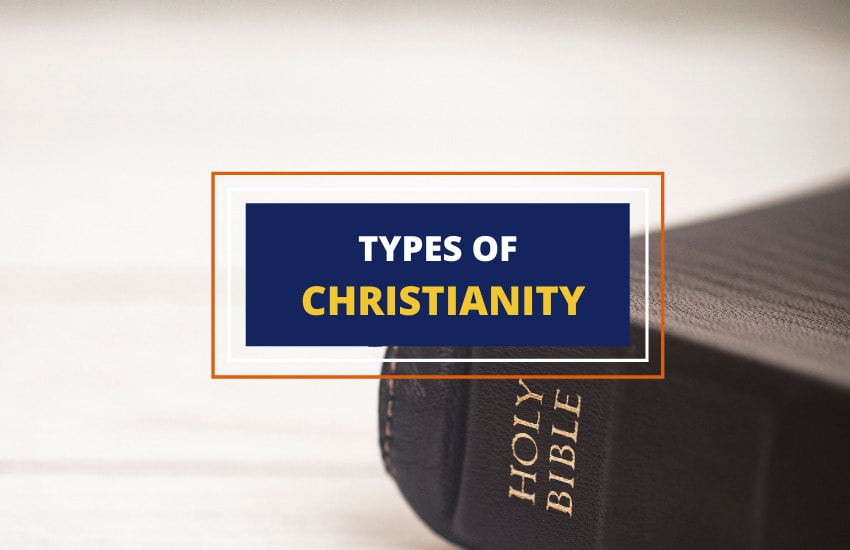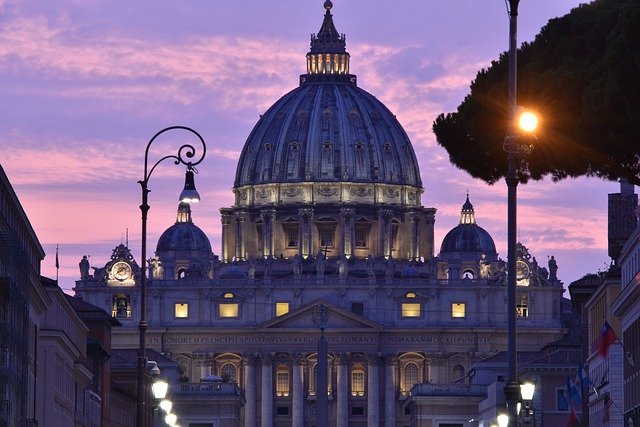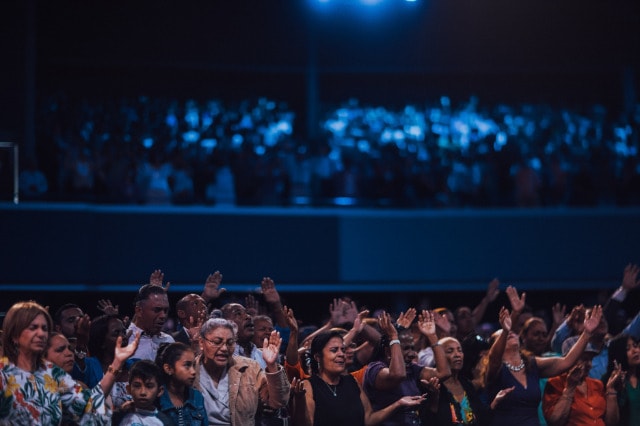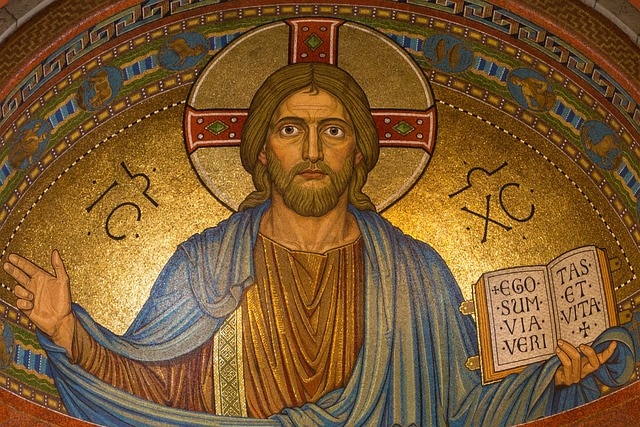
Table of Contents
A small sect of a marginalized religion in a backwater location with an executed leader and strange, secret rituals, today Christianity is the largest religion in the world with over 2.4 billion followers.
What began as a tight-knit community has become a global faith with adherents from all corners of the globe. These Christians bring an endless variety of cultural, social, ethnic beliefs making for seemingly infinite diversity in thought, belief, and practice.
In some ways, it is difficult even to understand Christianity as a coherent religion. Those who claim to be Christians claim to be followers of Jesus of Nazareth and his teachings as revealed in the New Testament of the Bible. The name Christian comes from their belief in him as the savior or messiah, using the Latin term Christus.
The following is a brief overview of the significant denominations under the umbrella of Christianity. In general, there are three primary divisions recognized. These are the Catholic Church, the Orthodox Church, and Protestantism.
There are several subdivisions of these, particularly for Protestants. Several smaller groups find themselves outside of these major divisions, some of their own accord.
1. Catholic Church

The Catholic Church, also known as Roman Catholicism, is the largest branch of Christianity with more than 1.345 billion adherents worldwide. This also makes it the most widely practiced religion in the world.
The term Catholic, meaning ‘universal,’ was first used by St. Ignatius in the year 110 CE. He and other Church Fathers were seeking to identify what they considered to be true believers as opposed to various heretical teachers and groups within early Christianity.
The Catholic Church traces its origins to Jesus by apostolic succession. The head of the Catholic Church is called the Pope, which is a term taken from the Latin word for father. The Pope is also known as the supreme pontiff and the bishop of Rome. Tradition tells us that the first Pope was St. Peter, the apostle.
Catholics practice seven sacraments. These ceremonies are means of conveying grace to participating congregants. The principal sacrament is the Eucharist celebrated during Mass, a liturgical reenactment of Jesus’ words during the Last Supper.
Today, the Catholic Church recognizes other traditions and denominations within Christianity while maintaining that the fullest expression of the faith is to be found in the Catholic Church and its teachings.
2. Orthodox (Eastern) Church

The Orthodox Church, or Eastern Orthodox Church, is the second-largest denomination within Christianity. Though there are far more Protestants, Protestantism is not a coherent denomination in and of itself.
There are approximately 220 million members of Eastern Orthodox churches. Like the Catholic Church, The Orthodox Church professes to be the one holy, true, and catholic church, tracing its origins to Jesus through apostolic succession.
So why is it distinct from Catholicism?
The Great Schism in 1054 was the result of increasing differences theologically, culturally, and politically. By this time, the Roman Empire was functioning as two separate regions. The Western Empire was ruled from Rome and the Eastern Empire from Constantinople (Byzantium). These regions were increasingly separated linguistically as Latin began to dominate in the West. Still, Greek persisted in the East, making communication among church leaders difficult.
The rising authority of the Bishop of Rome was also an area of much conflict. The Eastern churches, the seats of the earliest Church leaders, felt their influence being overtaken by those from the West.
Theologically, the strain was caused by what is known as the Filioque clause. During the first several centuries of Christianity, the most significant theological disputes occurred over issues of Christology, a.k.a. the nature of Jesus Christ.
Several ecumenical councils were convened to deal with various disputes and heresies. Filioque is a Latin term meaning “and the Son”. This phrase added to the Nicene Creed by Latin Church leaders caused controversy and ultimately the split between eastern and western Christianity.
In addition to this, the Orthodox Church functions differently from the Catholic Church. It is less centralized. Though the Ecumenical Patriarch of Constantinople is viewed as the spiritual representative of the Eastern Church, the patriarchs of each See do not answer to Constantinople.
These churches are autocephalous, meaning “self-headed”. This is why you can find Greek Orthodox and Russian Orthodox Churches. In all, there are 14 Sees within the Eastern Orthodox communions. Regionally they have their greatest influence in Eastern and Southeastern Europe, the Caucasus region around the Black Sea, and the Near East.
3. Protestantism

The third and by far most diverse grouping within Christianity is known as Protestantism. This name derives from the Protestant Reformation begun by Martin Luther in 1517 with the Ninety-five Theses. As an Augustinian monk, Luther did not initially intend to break from the Catholic Church but to draw attention to perceived ethical issues within the church, such as the rampant selling of indulgences to fund the massive building projects and luxury of the Vatican.
In 1521, at the Diet of Worms, Luther was officially condemned and excommunicated by the Catholic Church. He and those who agreed with him began churches in “protest” to what they viewed as the apostasy of the Catholic Church. Theoretically, this protest continues today since many of the original theological concerns have not been corrected by Rome.
Soon after the initial break from Rome, many variations and splits began to occur within Protestantism. Today, there are more variations than can be listed here. Still, a rough grouping can be made under the headings of mainline and evangelical.
1. Mainline Protestant Churches
Mainline denominations are the heirs of “magisterial” denominations. Luther, Calvin, and others sought to work with and within existing government institutions. They were not seeking to undo existing authority structures but to use them to bring about institutional churches.
- Lutheran Churches follow the influence and teaching of Martin Luther.
- Presbyterian Churches are the heirs of John Calvin as are Reformed churches.
- King Henry VIII used the Protestant Reformation as an opportunity to break with Rome and found the Anglican Church when Pope Clement VII refused his request for an annulment.
- The United Methodist Church began as a purifying movement within Anglicanism by John and Charles Wesley in the 18th century.
- The Episcopal Church began as a way to avoid the ostracism of Anglicans during the American Revolution.
Other mainline denominations include the Church of Christ, Disciples of Christ, and American Baptist churches. These churches emphasize social justice issues and ecumenism, which is the cooperation of churches across denominational lines. Their members are generally well educated and of high socio-economic standing.
2. Evangelical Protestant Churches
Evangelicalism is a movement with influence in all protestant denominations, including mainline, but it has its most considerable impact among Southern Baptist, Fundamentalist, Pentecostal, and non-denominational churches.
Doctrinally, Evangelical Christians emphasize salvation by grace through faith alone in Jesus Christ. Thus, the conversion experience, or being “born again,” is critical in the faith journey of Evangelicals. For most, this is accompanied by “Believers’ baptism.”
While these churches cooperate with other churches within their same denominations and associations, they are far less hierarchical in their structure. An excellent example of this is the Southern Baptist Convention. This denomination is a collection of churches who agree with each other theologically and even culturally. However, each church functions independently.
Non-denominational churches operate even more independently though they often connect with other like-minded congregations. The Pentecostal movement is one of the more recent evangelical religious movements, starting in the early 20th century with the Azusa Street Revival in Lost Angeles. Consistent with the events of the revival, Pentecostal churches emphasize the baptism of the Holy Spirit. This baptism is characterized by speaking in tongues, healing, miracles, and other signs indicating that the Holy Spirit has filled an individual.
Other Notable Movements

1. Orthodox (Oriental) Christianity
Oriental Orthodox Churches are some of the oldest Christian institutions in existence. They operate in an autocephalous manner, similar to Eastern Orthodoxy. The six Sees, or groups of churches, are:
- Coptic Orthodox in Egypt
- Armenian Apostolic
- Syriac Orthodox
- Ethiopian Orthodox
- Eritrean Orthodox
- Indian Orthodox
The fact that the Kingdom of Armenia was the first state to recognize Christianity as its official religion points to the historicity of these churches.
Many of them can also trace their founding to the missionary work of one of Jesus’ twelve apostles. Their separation from Catholicism and Eastern Orthodoxy is attributed to the disputes over Christology in the early centuries of Christianity. They recognize the first three Ecumenical Councils of Nicaea in 325 CE, Constantinople in 381, and Ephesus in 431, but reject the statement coming out of Chalcedon in 451.
The crux of the dispute was over the use of the term physis, meaning nature. The Council of Chalcedon states that Christ is one “person” with two “natures” while Oriental Orthodoxy believes that Christ is fully human and fully divine in one physis. Today, all sides of the controversy agree the dispute is more about semantics than actual theological differences.
2. Restoration Movement
Another important Christian movement, though recent and particularly American in origin, is the Restoration Movement. This was a movement during the 19th century to restore the Christian church to what some believe Jesus Christ originally intended.
Some of the churches coming out of this movement are mainstream denominations today. For example, the Disciples of Christ came out of the Stone Campbell Revivals associated with the Second Great Awakening.
The Church of Jesus Christ of Latter-Day Saints, also known as Mormonism, began as a restoration movement by Joseph Smith with the publishing of The Book of Mormon in 1830.
Other religious groups associated with the spiritual fervor of the 19th century in America include Jehovah’s Witness, Seventh Day Adventist, and Christian Science.
In Brief
There are many more Christian denominations, associations, and movements absent from this brief overview. Today, the trend of Christianity around the globe is shifting. The church in the West, meaning Europe and North America, is seeing declining numbers.
Meanwhile, Christianity in Africa, South America, and Asia is experiencing unprecedented growth. According to some statistics, upward of 68% of all Christians live in these three regions.
This is affecting Christianity through added diversity within existing types and by birthing novel groups altogether. Adding variety to Christianity only adds to the beauty of the global church.








